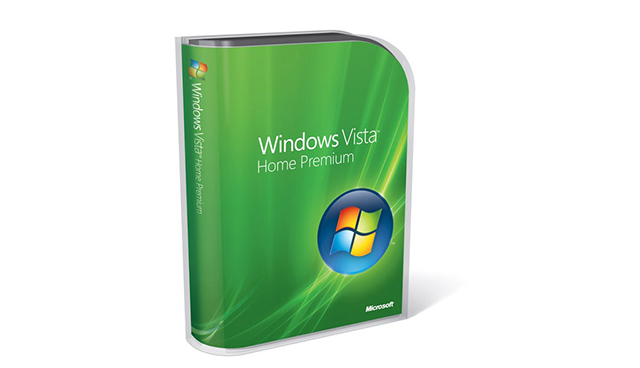
Windows 10 will overtake Windows 7... but when?
Each month, NetMarketShare reports on the state of the desktop operating system market. Its numbers are often interesting, and occasionally initially wrong (this month, for example, they showed a sizeable growth for Linux, before being corrected).
The Windows 10 Fall Creators Update is due to begin rolling out this month (even though over a third of users still don’t have the Creators Update), and Microsoft will be hoping this big new feature release will give its operating system a major boost. But how is Windows 10 doing at the moment, and when will it finally overtake Windows 7? Read on to find out.

Windows 10 continues to see very slow user adoption
According to NetMarketShare, in July Windows 10 grew its usage share by 0.83 percentage points -- its largest increase in three months. (This, remember, is an OS that only managed to gain a grand total of five percent share in an entire year).
With a new major update to the operating system right around the corner, you might expect Windows 10 to have grown its share by a similar figure in August, but no. It's back to the glacial growth we usually see for the new OS.

Windows 10 still failing to challenge Windows 7's market dominance
Last month I reported how, according to NetMarketShare’s figures, Windows 10 had managed to grow its usage share by just 5 percentage points in an entire year. That's a shocking state of affairs for a relatively new -- and regularly updated -- operating system, especially given that Windows 7 enjoyed a 2 percentage overall increase in the same time frame.
In July, perhaps buoyed by the news that the Windows 10 Creators Update was finally going to be offered to (nearly) all, Windows 10 posted its largest usage increase for three months, although still nothing for Microsoft to get excited about.

Windows 10's share grew by just 5 percent in a year
According to NetMarketShare’s figures, Windows 10’s share of the desktop operating system market remains pretty uninspiring, with growth much slower than you’d expect.
In fact in a year, the new OS has grown by just over 5 percent. In comparison, Windows 7 grew by 2 percent in the same time frame.

Bad news for Microsoft as Windows 10's growth slows
When Microsoft started the roll out of Windows 10 Creators Update on April 11, it seemed likely the new OS would see a boost in its market share as a result. Indeed, April’s usage figures from NetMarketShare suggested that was the case, with Windows 10’s share growing by a decent amount for the first time in months.
But the Creators Update roll out has been more of a dribble out so far, with only 15.2 percent of US Windows 10 users running it, and the boost that the operating system enjoyed in April hasn’t continued in May.

NTFS bug allows any website to crash Windows 7, 8.1
Users of older versions of Windows aren’t having the best time of it lately. Last week it was discovered that over 98 percent of those affected by the WannaCry ransomware were running Windows 7, and now a new bug has been found which can slow down and crash systems running that OS and Windows 8.1.
The new bug is trivially easy to exploit, making just browsing the web potentially hazardous, and there’s currently no fix available.

It's Windows 7 -- not Windows XP -- that's to blame for the spread of WannaCry ransomware
It’s been a week since the WannaCrypt/WannaCry ransomware cyber attacks began, and the repercussions are still being felt. It became clear quite early on that the ransomware was hitting older Windows systems hard (Windows 10 wasn’t affected), with a lot of talk focusing on the number of at-risk Windows XP systems still in service.
But here’s the interesting thing. Most of the affected systems -- over 98 percent -- were actually running Windows 7.

WannaCry: How to recover encrypted files
The WannaCry ransomware has made a huge mess across the globe, affecting hundreds of thousands of PCs, including critical devices in the healthcare sector. It is so dangerous that Microsoft released a public patch for Windows XP, after it dropped support three years ago.
Of course, the patch did not stop Windows XP users from getting infected, but, thankfully, a decryption tool, called WannaKey, is now available and should help recover your locked files. And the good news is that it works on other operating systems too, including Windows 7 (the x86 version, anyway) and Windows Server 2008!

Creators Update gives Windows 10 a much needed usage share boost
Windows 10 usage share has been suffering lately. According to NetMarketShare, in February, the new operating system lost share, and in March its gains were minimal.
With Windows 10 Creators Update rolling out in April -- even if Microsoft warns users against manually updating to it -- we were always likely to see the OS returning to growth, as users spend more time on it, finding out what’s new.

How to bypass Microsoft's next-gen processor update block on Windows 7 and 8.1
As you probably know by now, Microsoft is blocking Windows Updates on Windows 7 and 8.1 systems powered by next-generation processors like Kaby Lake and Ryzen.
It’s yet another of Microsoft’s desperate efforts to get users to switch to Windows 10, and one that -- understandably -- hasn’t gone down well with users who don’t want to upgrade to the new operating system. Thankfully, there is now a workaround.

The desperate tricks Microsoft employs to force customers to upgrade to Windows 10
When Microsoft introduced Windows 7 back in 2009, the software giant didn’t need to persuade customers to upgrade -- they leapt at the chance. Back then, upgrading to the latest and greatest version of Windows was a no brainer.
Fast forward to today, and Microsoft is in a very different position. Windows 10 is a huge improvement over its predecessor, Windows 8.x, and yet it’s struggling to gain market share. Figures from NetMarketShare, and Microsoft itself show adoption of the new OS has stalled. That’s got to be hugely frustrating for Microsoft, especially when you consider the number of tricks it has pulled to force users to upgrade.

Windows 10's growth has completely stalled -- can the Creators Update jump start interest in the new OS?
It’s no April Fool -- Windows 10 is struggling. The new operating system enjoyed solid -- and rapid -- growth when it was free (and being forced on to users' computers), but in recent months, it’s seeing little to no increase in usage, according to NetMarketShare.
The OS hit the 25 percent mark in January, but since then it lost a little share in February, and made only very minor gains in March. Windows 7, in comparison, remains the operating system of choice for most people, with its share continuing to rise.

Is Microsoft blocking Windows 7/8.1 updates on newer hardware?
A year ago, Microsoft revealed that Windows 10 would be the only Windows platform to support nextgen processors like Intel's Kaby Lake, AMD's Bristol Ridge, and Qualcomm’s 8996. The message then -- as now -- was clear: If you want to run a nextgen processor, you'll need Windows 10.
Last week, Microsoft published KB 4012982, with the title "'Your PC uses a processor that isn’t supported on this version of Windows' error when you scan or download Windows updates", suggesting that the restriction was now being enforced.

PSA: Time to leave Windows Vista behind -- extended support ends in April
Windows Vista is probably the least-liked version of Windows that Microsoft has ever released, but, fact of the matter is, the 10 year old operating system has its fans, as it still runs on many PCs today. And that's a problem if you're part of the crowd, because next month it will stop receiving any kind of official support, leaving you exposed.
Mainstream support for Windows Vista actually ended on April 10, 2012, but Microsoft has since continued to offer support options and updates as part of its extended support phase. That will come to an end in less than 30 days from now -- on April 11. Here's what happens after that.

Microsoft admits mistake, pulls problematic Windows 10 driver
Microsoft pushed out a mysterious driver to Windows users on Wednesday that caused big problems for some.
The driver, listed as "Microsoft -- WPD -- 2/22/2016 12:00:00 AM -- 5.2.5326.4762," wasn’t accompanied by any details, although we knew from the name that it related to Windows Portable Devices and affected users who had phones and tablets connected to the OS.
